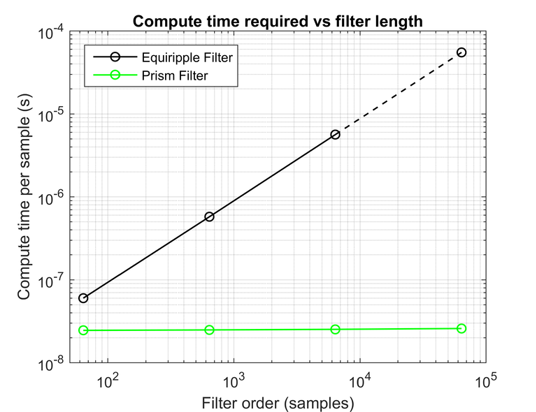Prism Signal Processing
What is Prism Signal Processing?
Prism Signal Processing is a new technique developed by the AIRG and patented by Oxford University Innovation. The Prism is a recursive FIR filter, offering linear phase response and numerical stability, but unlike conventional FIR filters the computation is fully recursive, so that the computational cost is independent of the length of the filter. A final advantage of the Prism is that filter design is very simple, so that new signal processing structures can be created in real time within resource-limited devices as signal properties and/or processing requirements change.
A range of signal processing techniques have been developed based on the Prism, such as static and dynamic notch filters, band-pass filters, and trackers, which extract the frequency, phase and/or amplitude of a sinusoidal component within the supplied signal. These tools share the Prism's characteristic rapid calculation and easy design.
We have started applying Prism techniques to Coriolis metering and other applications. In the case of Coriolis we have been able to achieve 100x faster measurement updates, allowing us (in collaboration with the Jaguar Land Rover group within the Department) to monitor for the first time the mass flow rate of engine fuel injection pulses as short as 1 ms.
The techniques can be used, in devices ranging from low cost processors or FPGAs up to supercomputers, to isolate and track one or more signal components.
The following graphs illustrate the difference in design and computation cost for a Prism over a conventional FIR Equiripple filter. In each case the filter order is increased from 64 (samples) to 64,000 (samples) in powers of ten. The comparison has been carried out on a moderately powerful laptop (2.5 GHz i7-2860 laptop with 16GB of RAM running 64 bit Windows 7).
Firstly, the time to carry out filter design is compared. For the Equiripple filter, the MATLAB filter design tool set was used. The design time rises rapidly with filter order, and for the 64,000 order case, the system is unable to complete the design ( a quadratic increase has been projected here). While undoubtedly such a filter could be designed using other tools and/or with relaxed design criteria, the graph illustrates the significant design effort required for many conventional FIR (and other) filters. This high design cost forms a significant barrier to flexible signal processing in embedded system design.
By contrast, the Prism filter design, as it merely requires the evaluation of linearly-space sine and cosine values, is essentially fixed and low.

The final graph shows the computation time required per sample, using n the same laptop, to evaluate the Equiripple and Prism filters as the filter order increases. The Equiripple filter requires a linear increase in computational effort with filter length, while the Prism calculation, being fully recursive, has a fixed computational load irrespective of the filter order.

References
[1] Henry, MP, Leach, F, Davy, M, Bushuev, O, Tombs, MS, Zhou, FB and Karout, S. “The Prism: Efficient Signal Processing for the Internet of Things”, IEEE Industrial Electronics Magazine, pp 22 – 32, Dec 2017.
[2] Henry, MP. Method and system for tracking sinusoidal wave parameters from a received signal that includes noise. GB1619086.0 patent application, November 2016.
The Prism Patent Application is published here.
